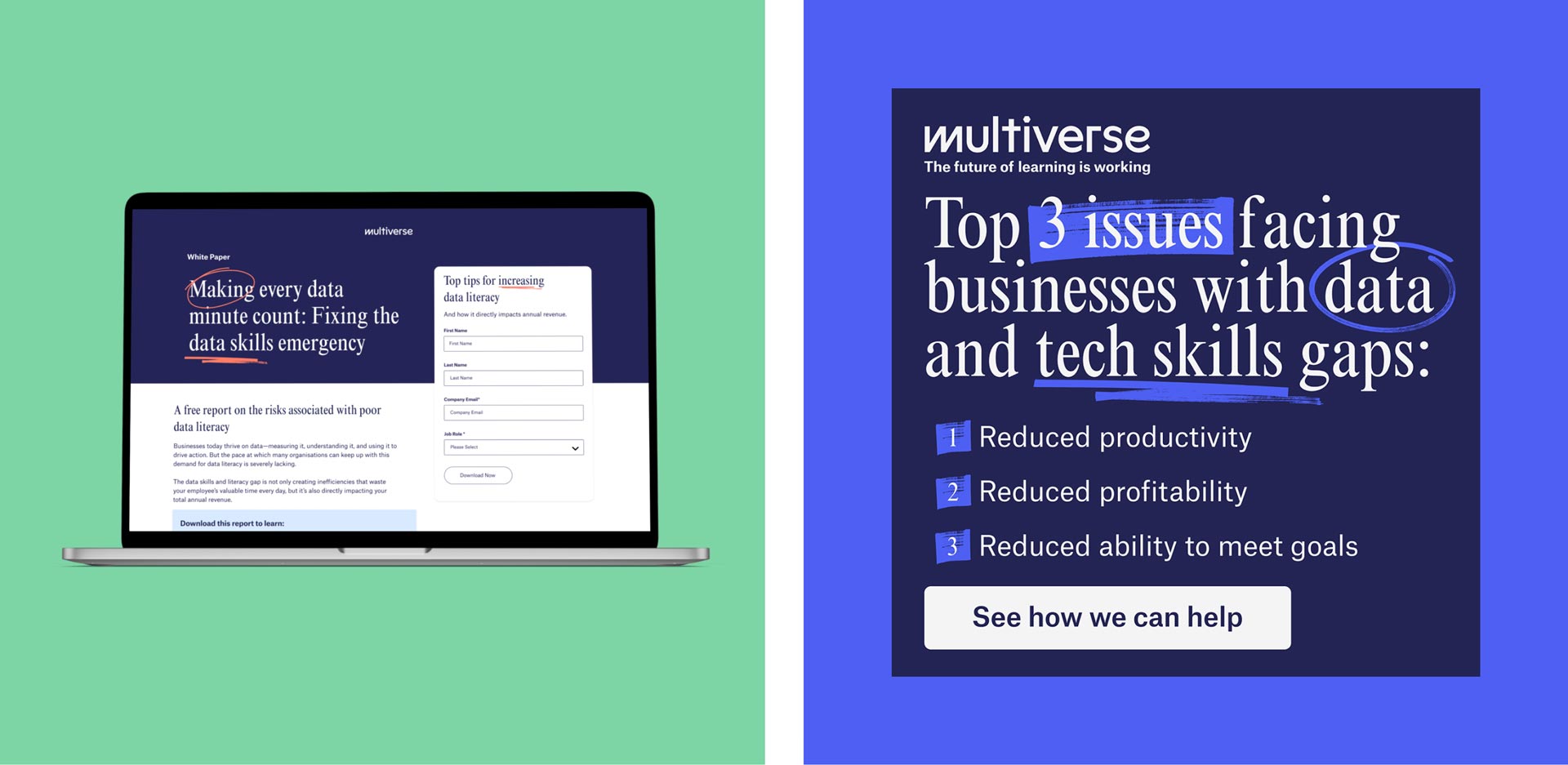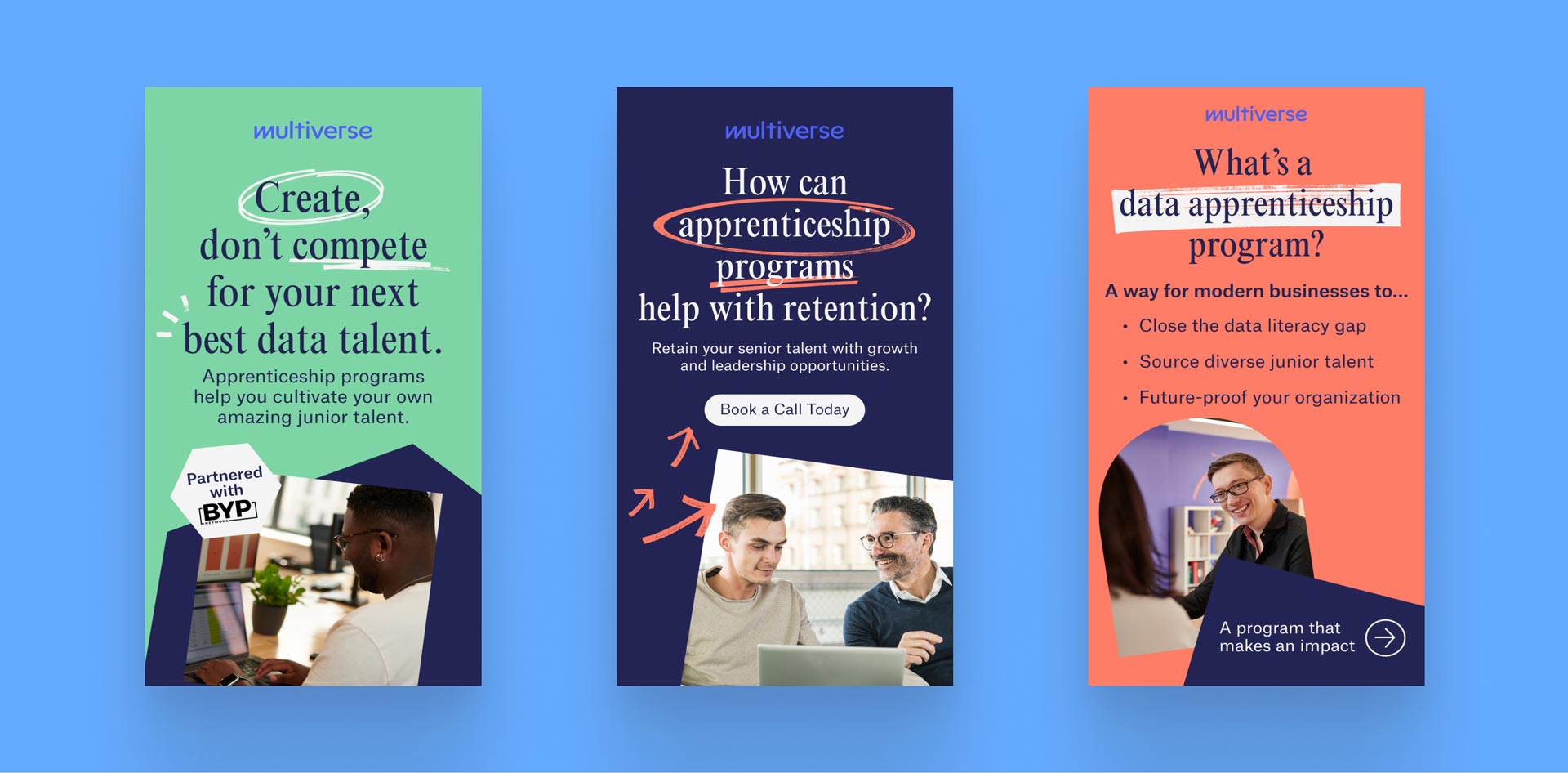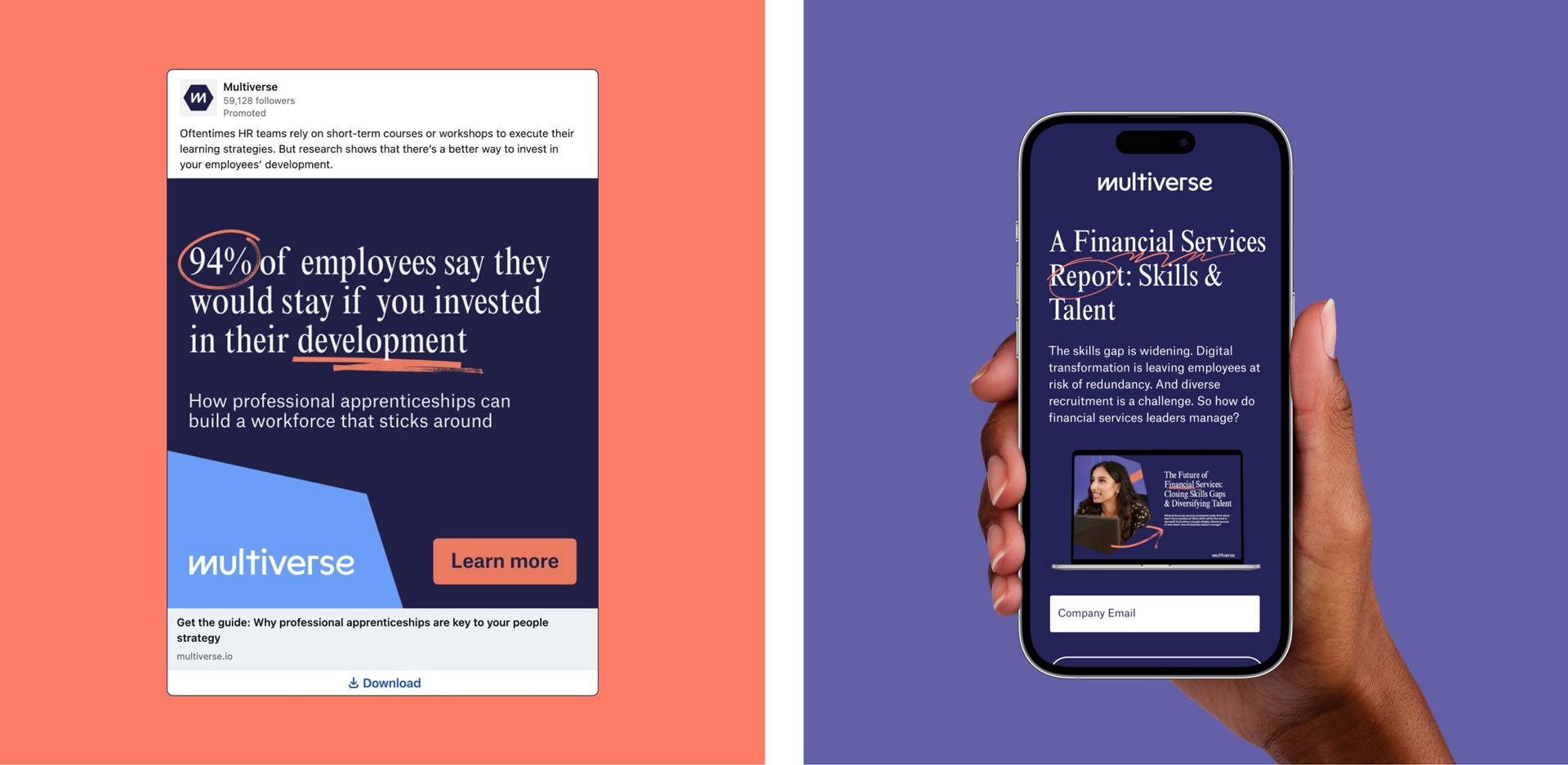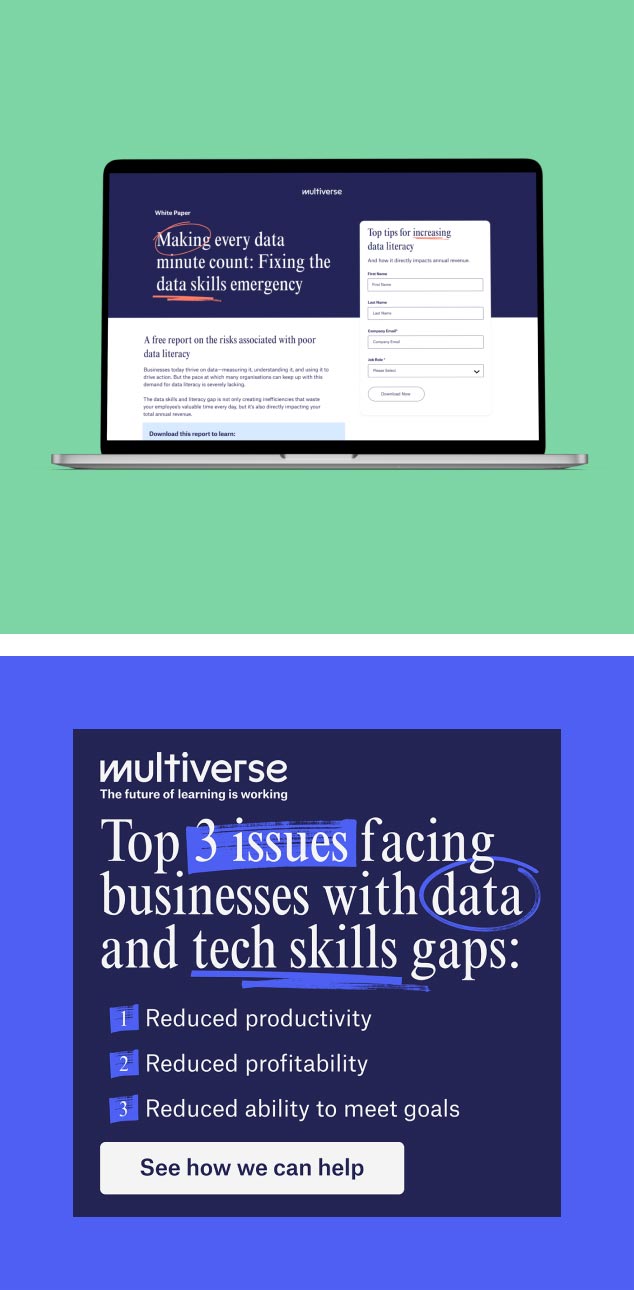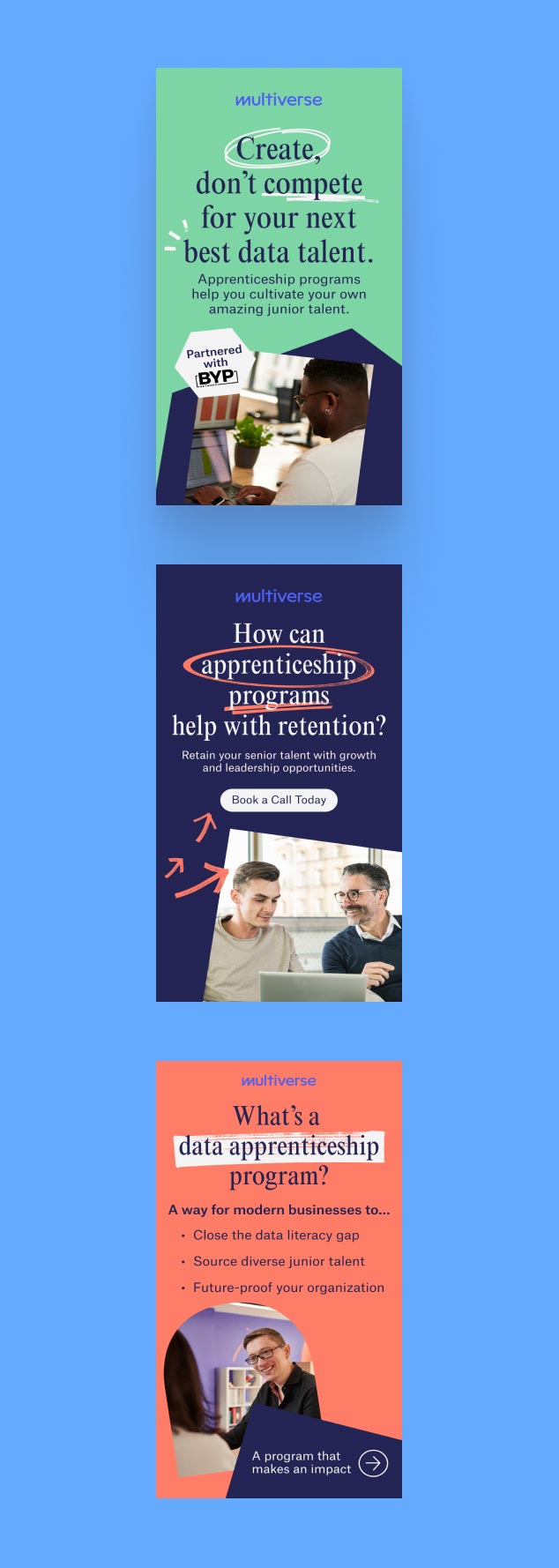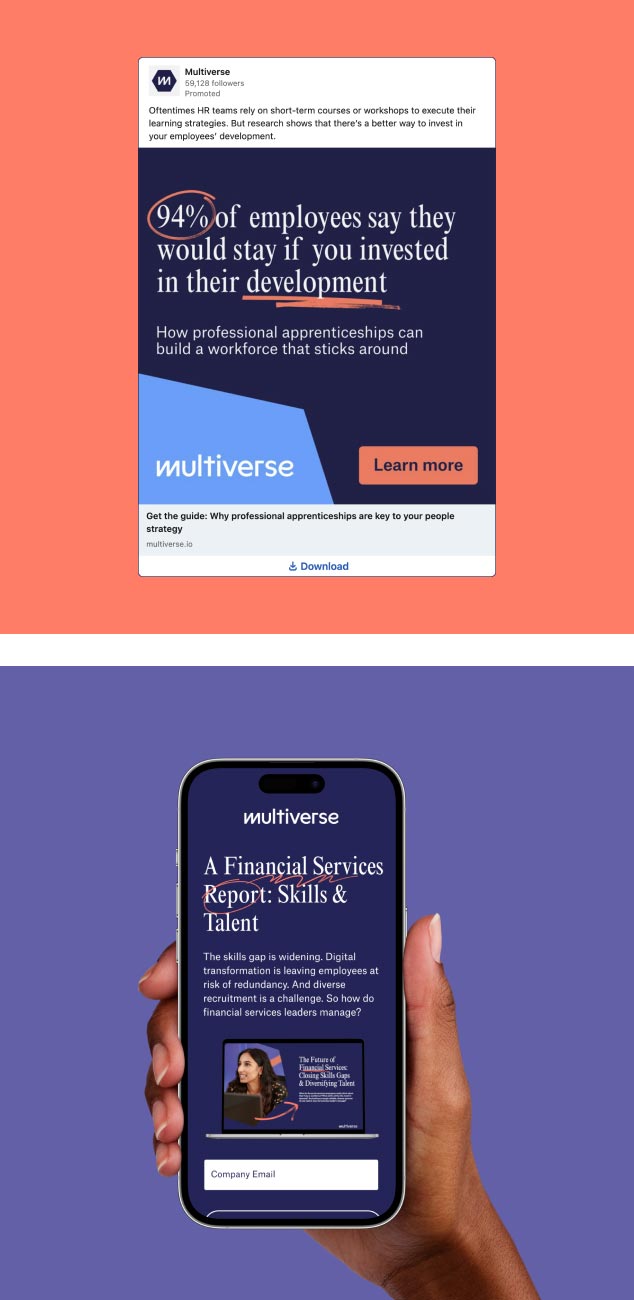Our team created a testing framework for LinkedIn where we bucketed campaigns and creative concepts into “validated, non-validated, and needs to be validated” groups based on our CPL benchmarks.
What We Did:
- Identify our benchmark CPL after an initial round of testing.
- Build value props that resonate with each ABM segment based on brand engagement.
- Automate reporting to enable speedy collaboration with sales to vet lead quality quickly.
- Optimize copy, creative, and campaign type based on validated vs. non-validated framework.
- Repeat the process, scaling up what worked and scrapping what didn’t.
We used 6Sense as our ABM platform and worked with the Multiverse team to identify a list of target accounts in the US. Because of 6Sense’s capabilities and Multiverse’s TAM, LinkedIn presented the clearest path to success. It offers robust B2B targeting to narrow in on specific positions, departments, and seniority levels working at our target accounts. LinkedIn also offers highly-visual placements, giving us the timeline real estate to creatively convey Multiverse’s most compelling value props.
We knew that key learnings could be muddied without a structured testing framework, so we focused on testing three specific things:
- Content: We tested different types of content – from case studies, flagship industry reports, whitepapers, and more – to see what content types were most important to our target audience.
- Messaging: Once we found the types of content most likely to convert, we narrowed our testing to focus on specific messages, copy and CTAs based on the ABM segment’s intent.
- Campaign Optimization Events: We amplified winning content and messages in multiple campaigns simultaneously, optimizing for multiple optimization events to see which strategy was most effective at generating qualified leads.
Our primary KPI, cost per marketing qualified lead, guided our testing framework. No matter what we tested, we knew that once we neared our cost per MQL threshold without actually generating a lead, we’d need to make aggressive optimizations or kill it completely. Collaborating closely with Multiverse’s in-house marketing team, we decreased cost per MQL by 57% by identifying the types of content and messages that convert. Here’s a deeper look at those results ↓

